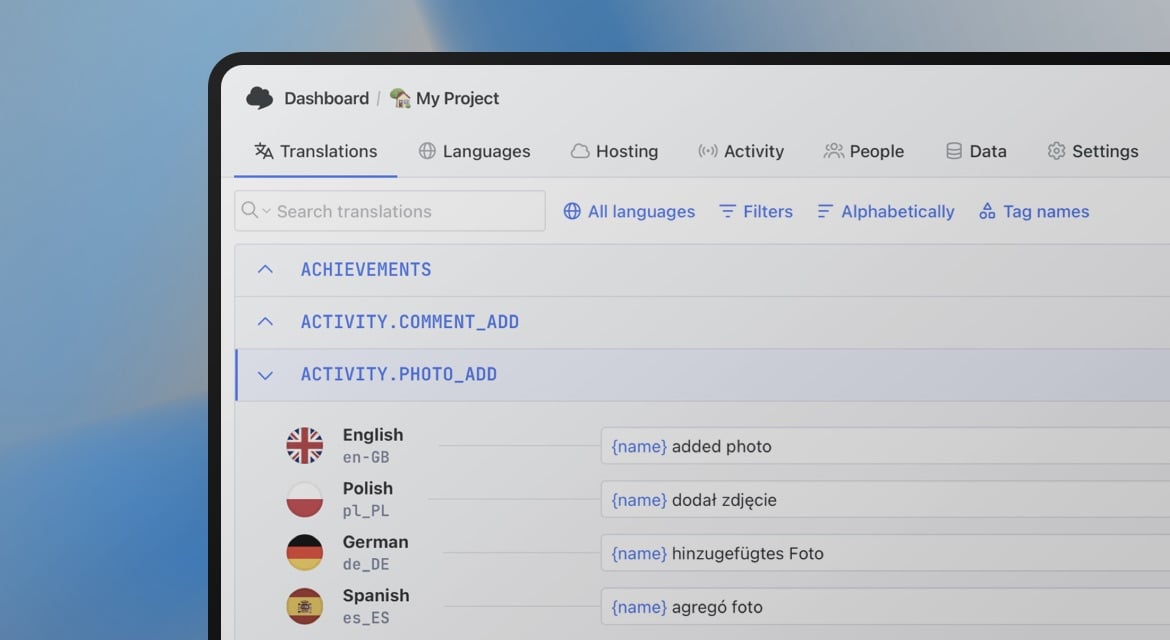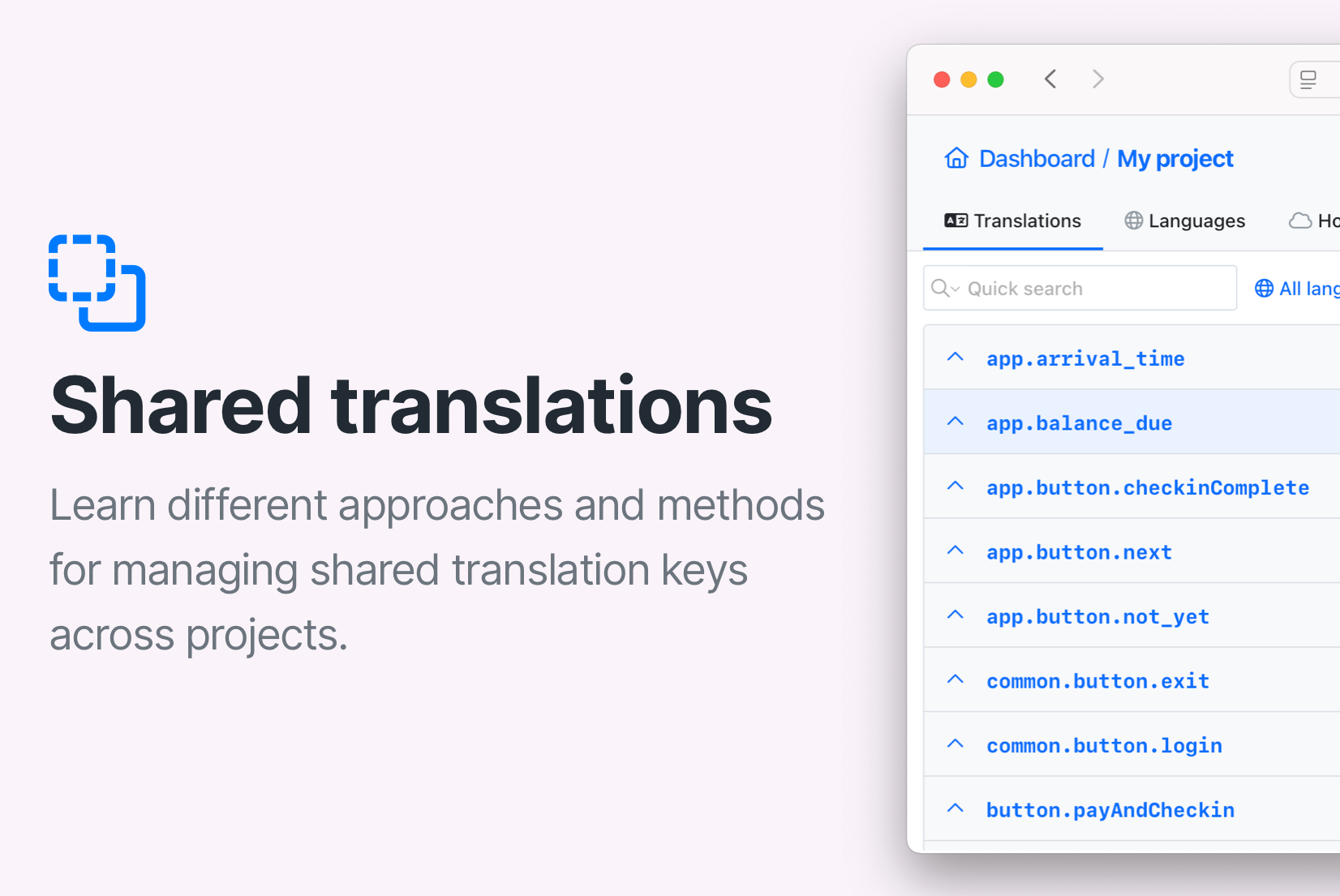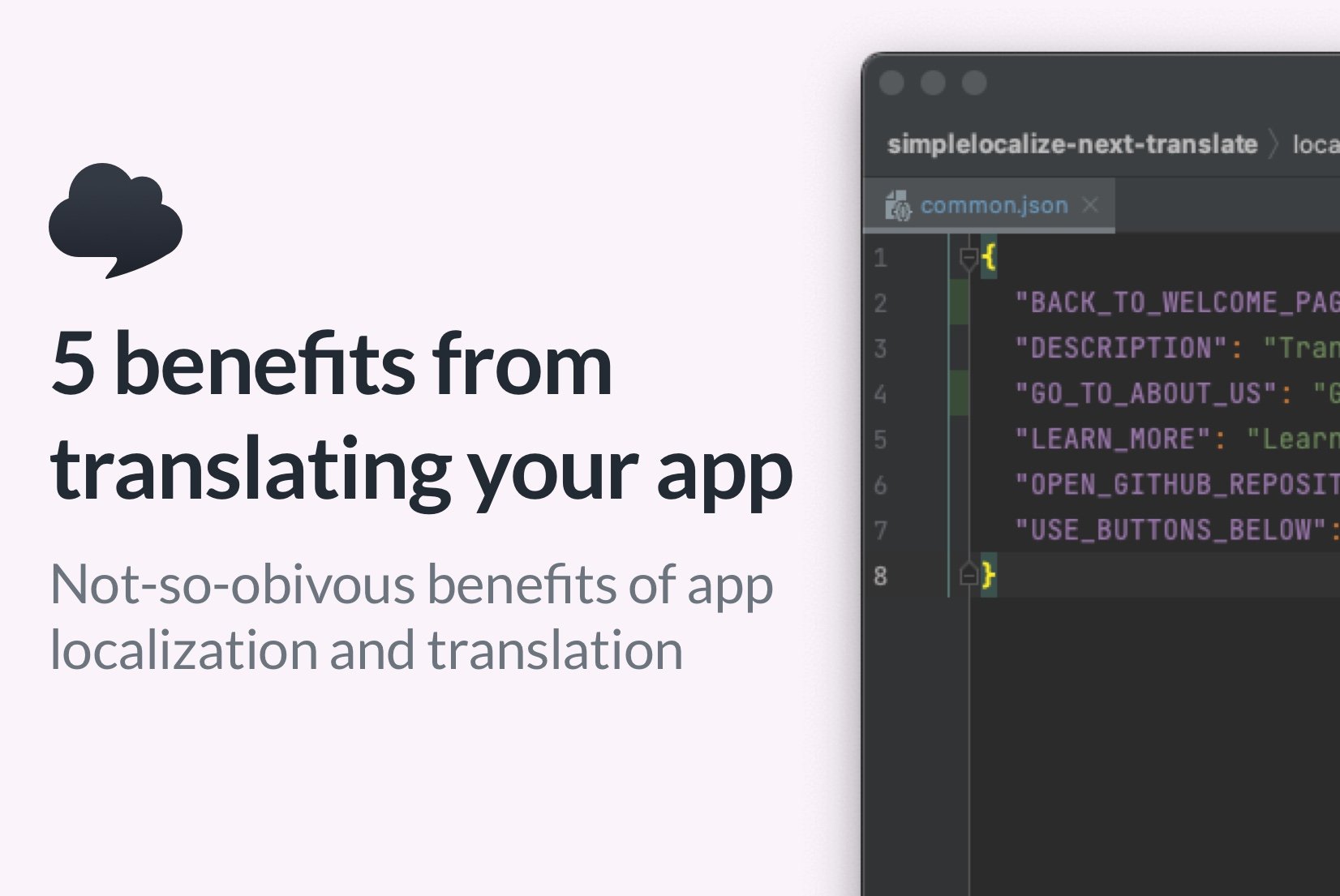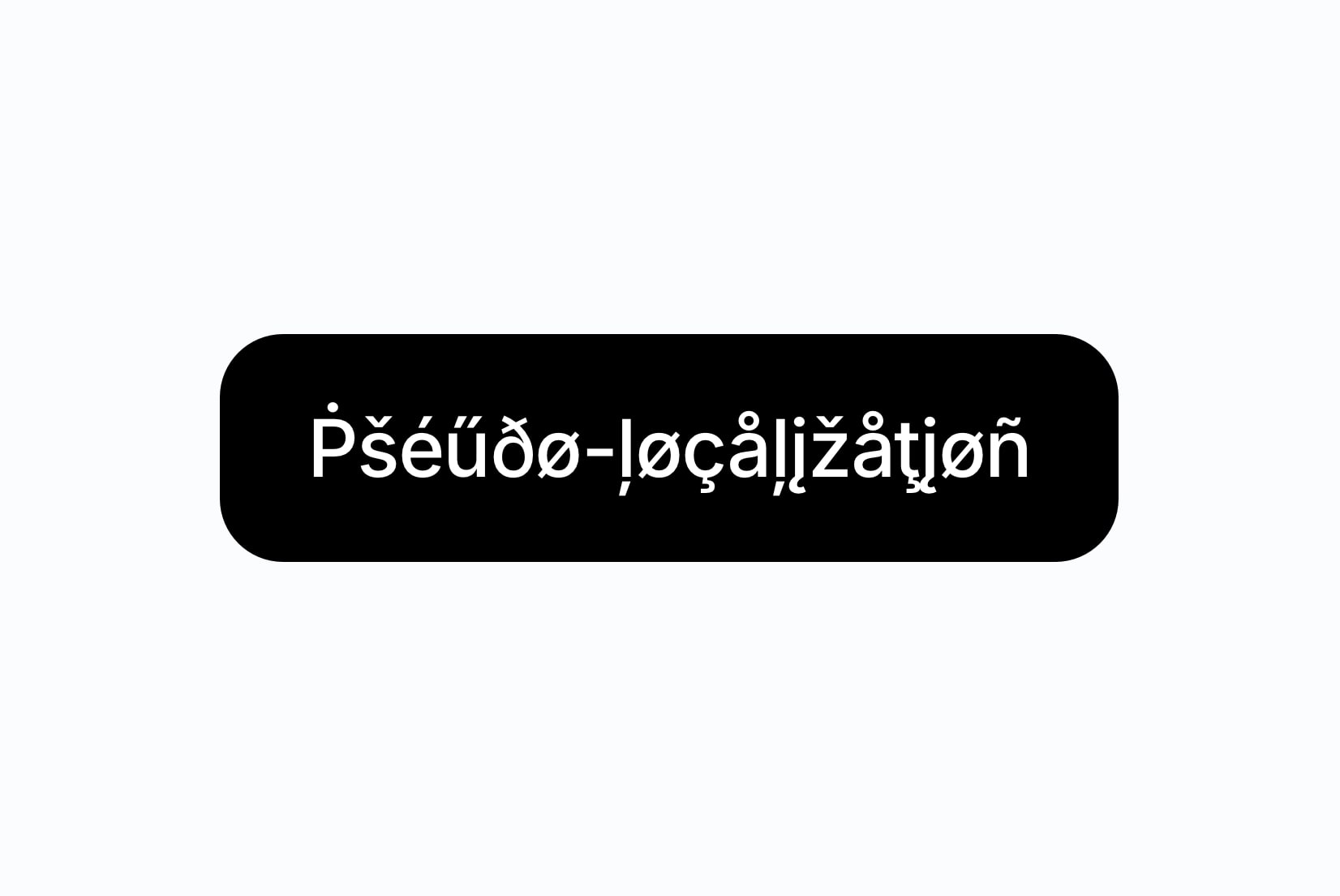Translation vs. Transcreation: What's the difference?
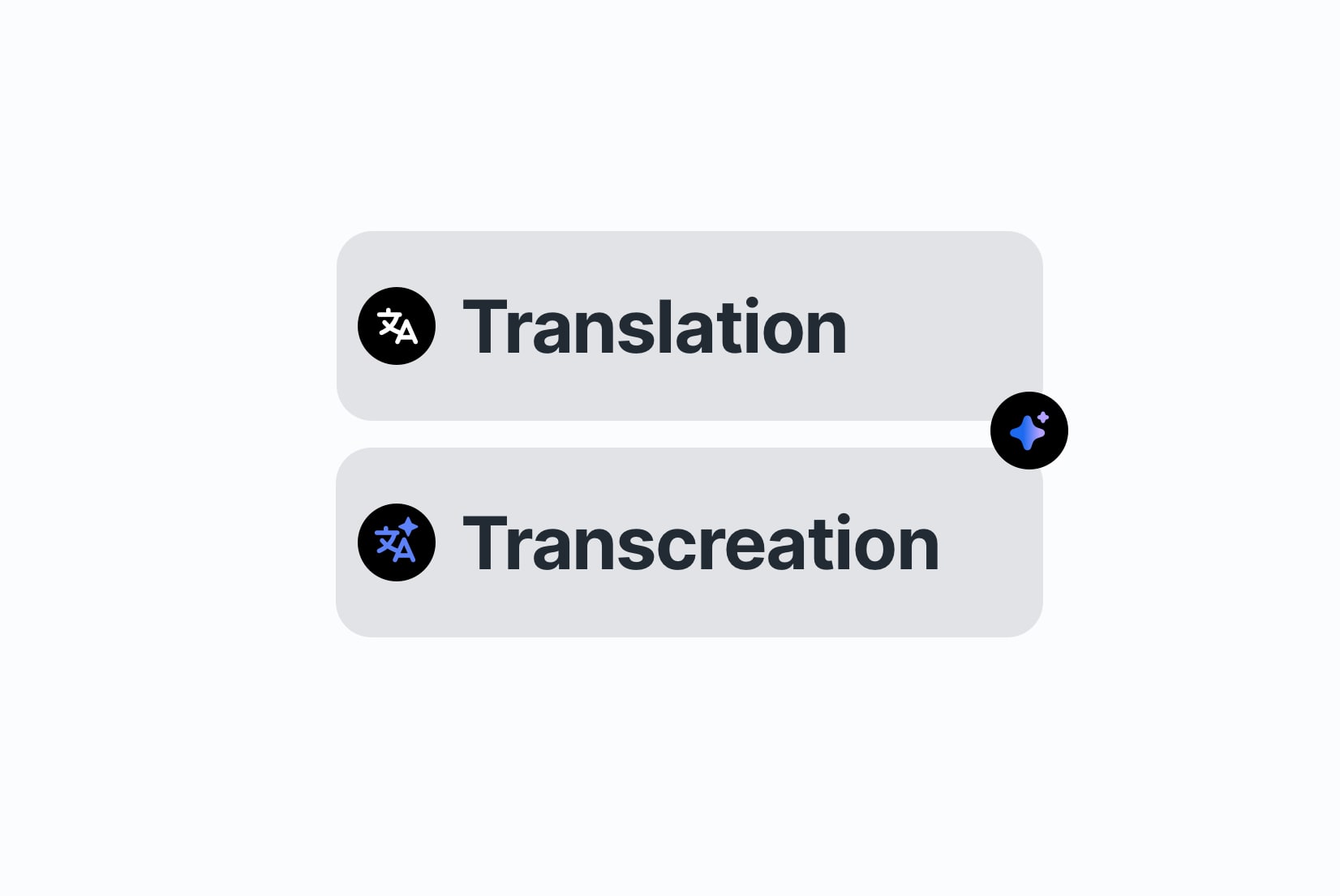
Translation and transcreation are two distinct processes in the realm of language services, each serving different purposes and requiring different skill sets.
- Translation converts meaning from one language to another, prioritizing accuracy and consistency.
- Transcreation recreates the message so it evokes the same intent, tone, and emotional impact in another culture, even if the words change a lot.
- Use translation for UI strings, documentation, legal text, and repetitive content. Use transcreation for taglines, ads, landing pages, push notifications, app store descriptions, and high-stakes brand moments.
- The best teams combine both approaches and manage them centrally in SimpleLocalize with glossaries, workflows and in-context review.
In the following sections, we will explore the definitions of translation and transcreation, their differences, and when to use each approach effectively.
What is Translation
Translation is the process of converting text from one language to another while maintaining the original meaning, context, and intent. It focuses on accuracy, consistency, and fidelity to the source material. Translators work with various types of content, including:
- Product UI copy (buttons, menus, error messages)
- Documentation (user manuals, help articles)
- Legal texts (contracts, terms of service)
- Repetitive content (emails, notifications)

The goal of translation is to ensure that the target audience understands the content as intended by the original author, without altering the message's core meaning.
Learn more about translation in software localization.
What is Transcreation
Transcreation adapts a message creatively so it lands with the same intent, emotion, and brand voice as the original. The result may depart significantly from the source wording but retains the essence of the message. Transcreation is often used for:
- Brand taglines and slogans
- Advertising copy (print, digital, social media)
- Landing pages and hero sections
- App store descriptions and screenshots captions
- Push notifications and in-app messages
- High-stakes brand moments (product launches, campaigns)

Transcreation requires a deep understanding of both the source and target cultures, as well as the ability to craft messages that resonate emotionally with the target audience. It often involves creative writing skills, cultural adaptation, and a keen sense of marketing.
Why transcreation matters
Transcreation is essential for brands that want to connect with diverse audiences across different cultures. Today, users don't just want to read content in their language; they want to feel it speaks to them personally.
A perfectly translated headline can still miss the moment if it fails to connect culturally. Transcreation ensures that the message is not only understood but also feels relevant and engaging to the target audience.
The key is to know when to use translation and when to use transcreation. Both processes have their place in a comprehensive localization strategy, and understanding their differences can help you choose the right approach for your content.
Translation and Transcreation: Key differences
Words or feelings? Translation and transcreation serve different purposes, and understanding their differences is crucial for effective localization. Here are the key distinctions:
| Aspect | Translation | Transcreation |
|---|---|---|
| Purpose | Convert meaning accurately | Evoke the same intent and emotion |
| Focus | Accuracy and consistency | Cultural adaptation and emotional impact |
| Flexibility | Limited; stays close to source text | High; can change wording, structure, and tone |
| Approach | Word-for-word conversion | Creative adaptation of messages |
| Skill set | Language proficiency, subject matter expertise | Creative writing, cultural understanding, marketing knowledge |
| Result | Text that conveys the same meaning | Message that resonates emotionally with the target audience |
| Content type | UI strings, documentation, legal text | Taglines, ads, landing pages, push notifications |
| Use cases | Software localization, technical content | Marketing campaigns, brand messaging |
| Review process | Linguistic review, QA checks | Creative review, cultural feedback |
| Time and cost | Generally faster and less expensive | More time-consuming and costly due to creative work |
Transcreation examples
To illustrate the difference between translation and transcreation, let's look at some examples from well-known brands that have successfully adapted their messages for different markets.
Hero section
Canva, a popular graphic design platform, uses transcreation to adapt its hero section across languages.

In English, the hero section reads: "What will you design today?"
In Spanish, it is transcreated as: "¿Qué diseñamos hoy?"
Instead of "¿Qué vas a diseñar hoy?" which is a direct translation, the transcreated version captures the brand's friendly tone and encourages users to engage with the platform.
The CTA is also adapted: "Quiero diseñar" instead of "Comienza a diseñar," which feels more inviting and personal.
Tagline
McDonald's is another example of effective transcreation. The brand's iconic tagline, "I'm Lovin' It," has been adapted for various markets. In Germany, it becomes "Ich liebe es," which directly translates to "I love it." In Spanish-speaking countries, it is often transcreated as "Me encanta," which conveys the same sentiment in a culturally relevant way.

Tagline transcreation is challenging because it must resonate with local audiences while maintaining the brand's identity. McDonald's has successfully navigated this by adapting its message to fit cultural nuances.
App store description
Another example is the app store description for the popular language learning app, Duolingo.

English: "Duolingo - Language Lessons: Learn Languages, Math & Music"
Spanish: "Duolingo - Aprende idiomas: Aprende inglés, francés y más"
Polish: "Ucz się języków z Duolingo: Angielski, hiszpański i więcej"
In this case, the transcreated descriptions maintain the core message of learning languages while adapting the wording to fit each language's structure and cultural context. The focus is on making the description engaging and relevant to the target audience.
Marketing campaigns
Transcreation is also crucial for marketing campaigns. In the example below you can see how Old Spice adapted its famous "Smell Like a Man, Man" campaign for different markets.

In the original English version, the tagline is straightforward and masculine. However, in Spanish-speaking countries, it was transcreated to "Huele como un tío, tío," which maintains the playful tone while making it more relatable to the local audience. In Turkish, it becomes "NE KADAR DA ERKEK BiR KOKU" which translates to "What a manly smell!" capturing the essence of the original message while adapting it to fit cultural expectations.
When to use translation vs. transcreation
Use translation when:
- Content is technical, legal, or requires high accuracy.
- Precision outweighs persuasion.
- You need to scale across thousands of strings quickly.
- The target audience is familiar with the source culture and language.
Use transcreation when:
- Content is marketing-focused, creative, or brand-driven.
- Cultural references, humor, or idioms are involved.
- The copy carries your brand (taglines, hero copy, ads).
- You are optimizing conversion in a market.
In many cases, a combination of both approaches is necessary. For example, you might translate the bulk of your app's UI strings while transcreating the marketing copy to ensure it resonates with local users.
Tips for effective translation and transcreation
Here are some best practices to ensure successful translation and transcreation:
- Segment your content: Identify which parts require translation and which need transcreation. Tag your translation keys by intent (e.g., ux, marketing, legal) to route to the right people.
- Provide context: Use screenshots, descriptions and comments to help translators and transcreators understand the context of the content. In-context review is a great way to view the content in its actual environment.
- Set review criteria: Define clear guidelines for both translation and transcreation. For translation, focus on accuracy and consistency, formatting and placeholders. For transcreation, keep an eye on message fit, tone, uniqueness and cultural relevance.
- Test with real users: A/B test headlines and CTAs to see which versions resonate best with your target audience. Use analytics to measure engagement and conversion rates.
- Use machine translation wisely: Use MT for initial drafts of translation, but always have a human creative review for transcreation. Machine translation can speed up the process, but it lacks the cultural nuance needed for effective transcreation.
- Balance creativity and fidelity: Don't force transcreation where translation will do as you don't want to overdo it and risk losing the original message. But don't skimp on transcreation where it matters most, like marketing copy, as it can make or break your brand's success in a new market.
Conclusion
For global growth, words must work and win. Use translation to scale clarity and consistency, and transcreation to connect emotionally and culturally. Both processes are essential for effective localization, and understanding their differences can help you choose the right approach for your content. By combining translation and transcreation, you can create a comprehensive localization strategy that resonates with diverse audiences and drives engagement.
For more insights on localization, check out our blog and documentation for best practices and tips on managing your translation projects effectively.
